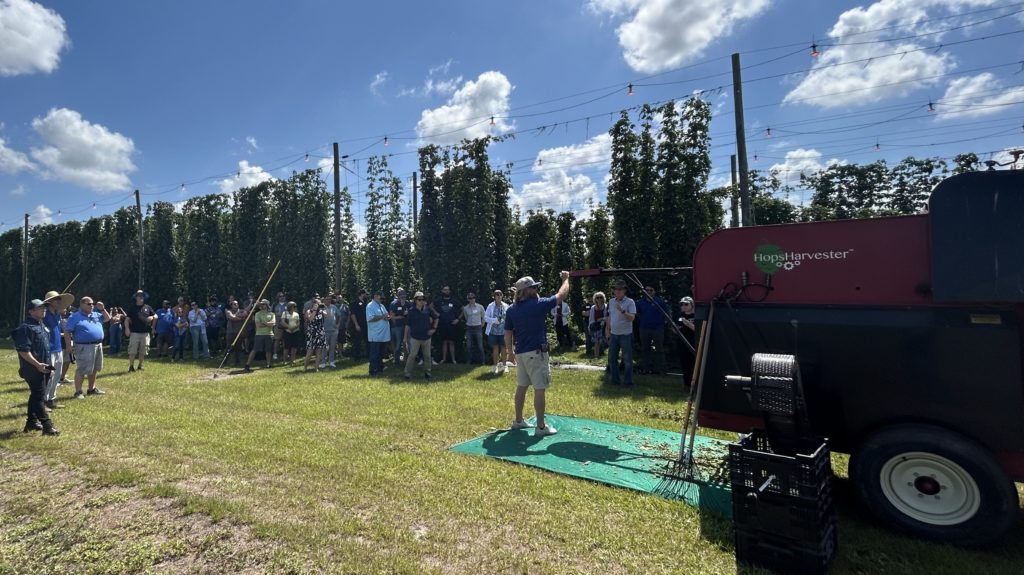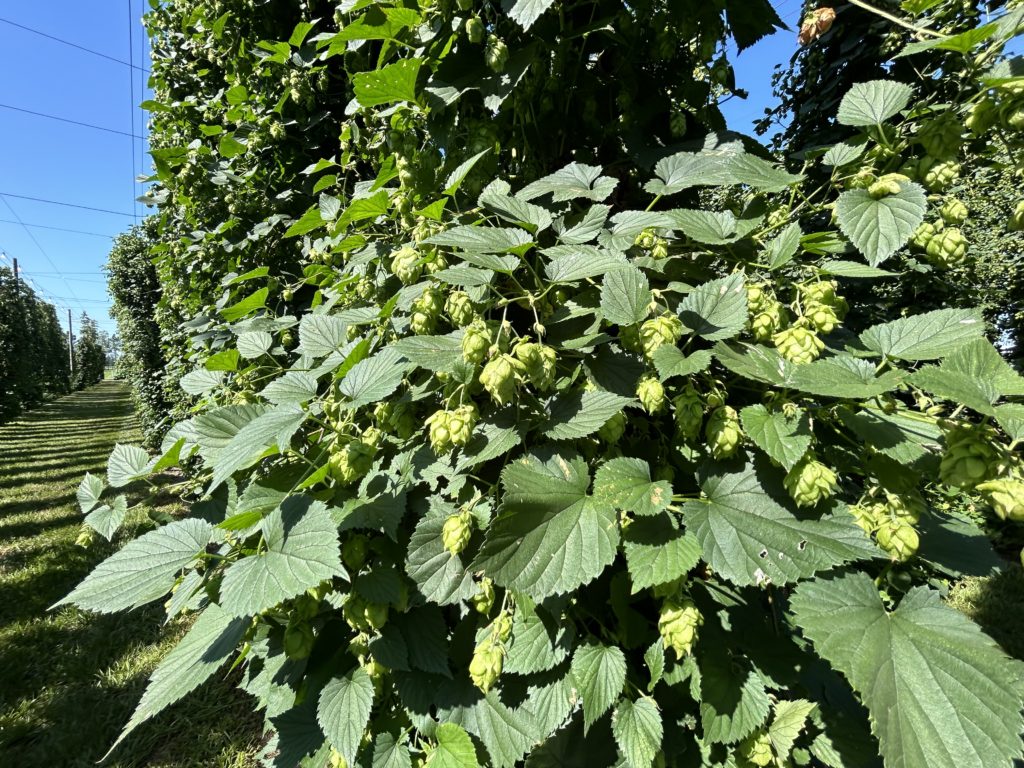
By Frank Giles
One of the missions of land grant universities is helping farmers to learn better ways to produce their crops. But another is seeking alternative crops, which might help growers to diversify their business operations. Some alternative crops work; others don’t. Research efforts might pay off when a crop catches on.

A recent of example of this is hop production in the state of Florida, which would have been considered virtually impossible only a few years ago. Shinsuke Agehara, University of Florida Institute of Food and Agricultural Sciences (UF/IFAS) associate professor of plant physiology, has led the effort to learn how to grow hops in Florida. Zhanao Deng, UF/IFAS professor of environmental horticulture, has worked closely with Agehara on the project. They have been studying the crop for more than eight years at the Gulf Coast Research and Education Center (GCREC) in Wimauma.
Leave the Lights on
Much of the hops (about 90%) used in brewing beer is grown in Washington and Oregon. The biggest limiting factor in producing hops in Florida versus the Pacific Northwest is daylight length. Washington and Oregon have significantly longer summer days than Florida, with up to 15 hours of light per day.
Agehara and his fellow researchers have deployed LED lighting in the GCREC hopyard to mimic extended daylight. He said this and other production practices have allowed the team to develop the right “recipe” for growing hops in the Sunshine State. In fact, they have been able to produce yields that rival those from the Pacific Northwest.
This year’s spring crop, which was harvested in June, was one of the highest-yielding crops to date. And unlike other hop-producing areas, two crops (spring and fall) can be grown in Florida per year. In 2016, one of the first hop crops at GCREC with no LED lights yielded only 176 pounds per acre, 10% of average yields in the Pacific Northwest. With the LED lights and improved practices, the hops grown at GCREC yielded 1,612 pounds per acre (1,127 pounds spring crop + 485 pounds spring fall crop), 98% of the Pacific Northwest’s yields.
Field Day Showcase
In June, GCREC hosted a field day to show interested growers and brewmasters the hopyard and share information on growing the crop. Deng presented research on developing new hop hybrids. The team has had success growing Cascade — one of the most popular varieties in the Pacific Northwest — but is attempting to develop varieties more suited for Florida’s conditions.
“Our goal is to develop new varieties that can yield like Cascade but have different chemical profiles, such as higher oil content, different aromas and good brewing qualities,” Deng said. “Also, we want new varieties that are adapted to our climate and our sandy soils. These need to work with our existing production systems, like drip irrigation.”
Deng presented two experimental varieties that have been developed at GCREC that show promise. The researchers are particularly excited about several variant lines from Cascade that have been identified. These variant Cascade lines produce large, long cones with strong aroma and high alpha acids and essential oil content.
Building a Market
Hops, like many alternative crops, face the challenge of what comes first — supply or demand. Growers need a market of breweries to supply, while breweries need a consistent supply of hops to grow a loyal base of consumers. Neither of those things exist yet.
A panel of brewmasters indicated a willingness to use locally grown hops because it is a good marketing tool. And the local hops have a distinct flavor and aroma. Cascade provides a hint of melon flavor, which is different from the same variety when grown in the Pacific Northwest.
The brewers also said that growers would have to invest in a machine that converts hop cones into pellets. The pellets are more shelf stable and consistent in the brewing process. The machine would represent a considerable investment for growers. Agehara and his team are eager to work with growers interested in growing hops in Florida. Visit the UF/IFAS hops page (edis.ifas.ufl.edu/topics/hops) for more information.










